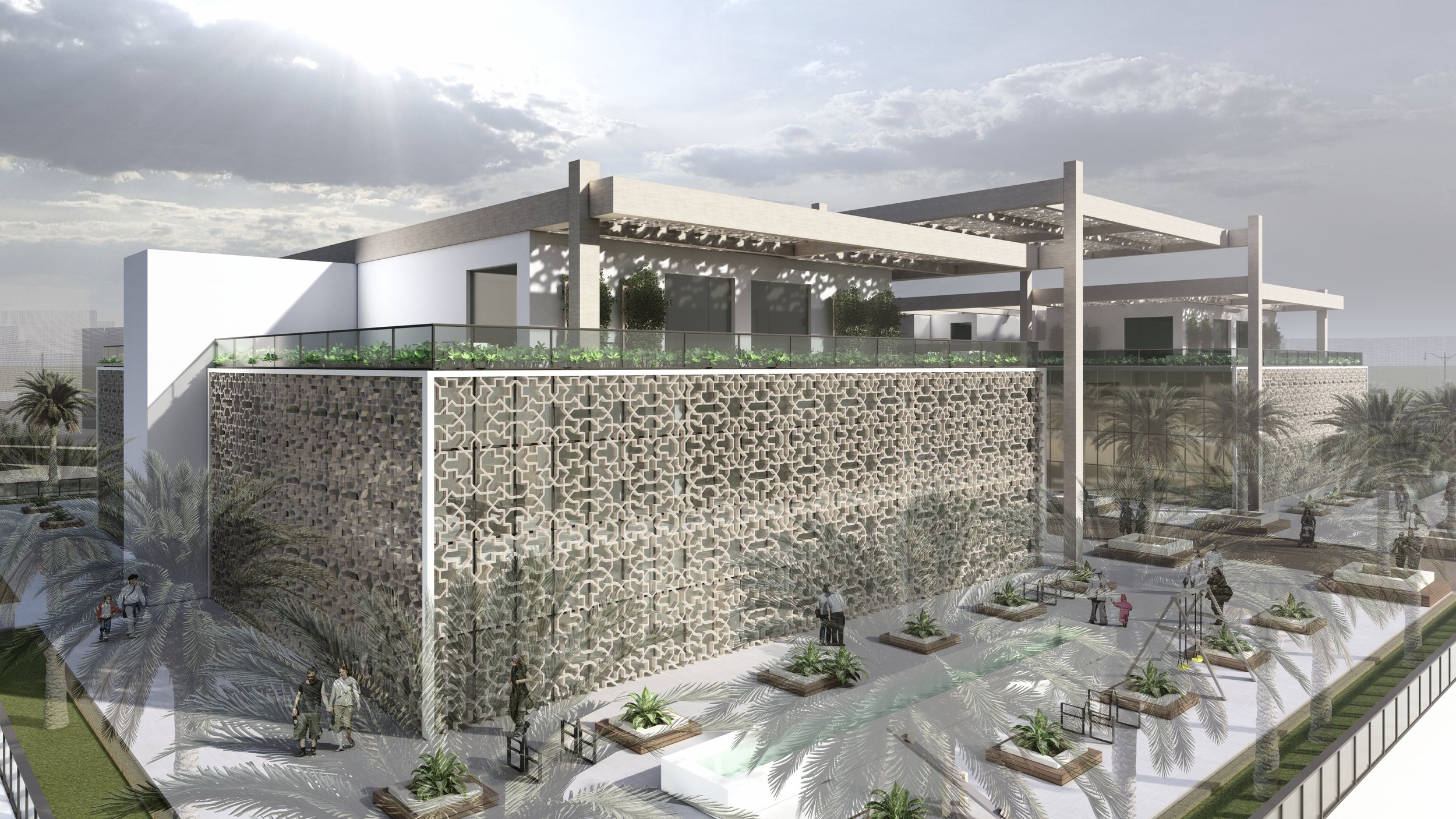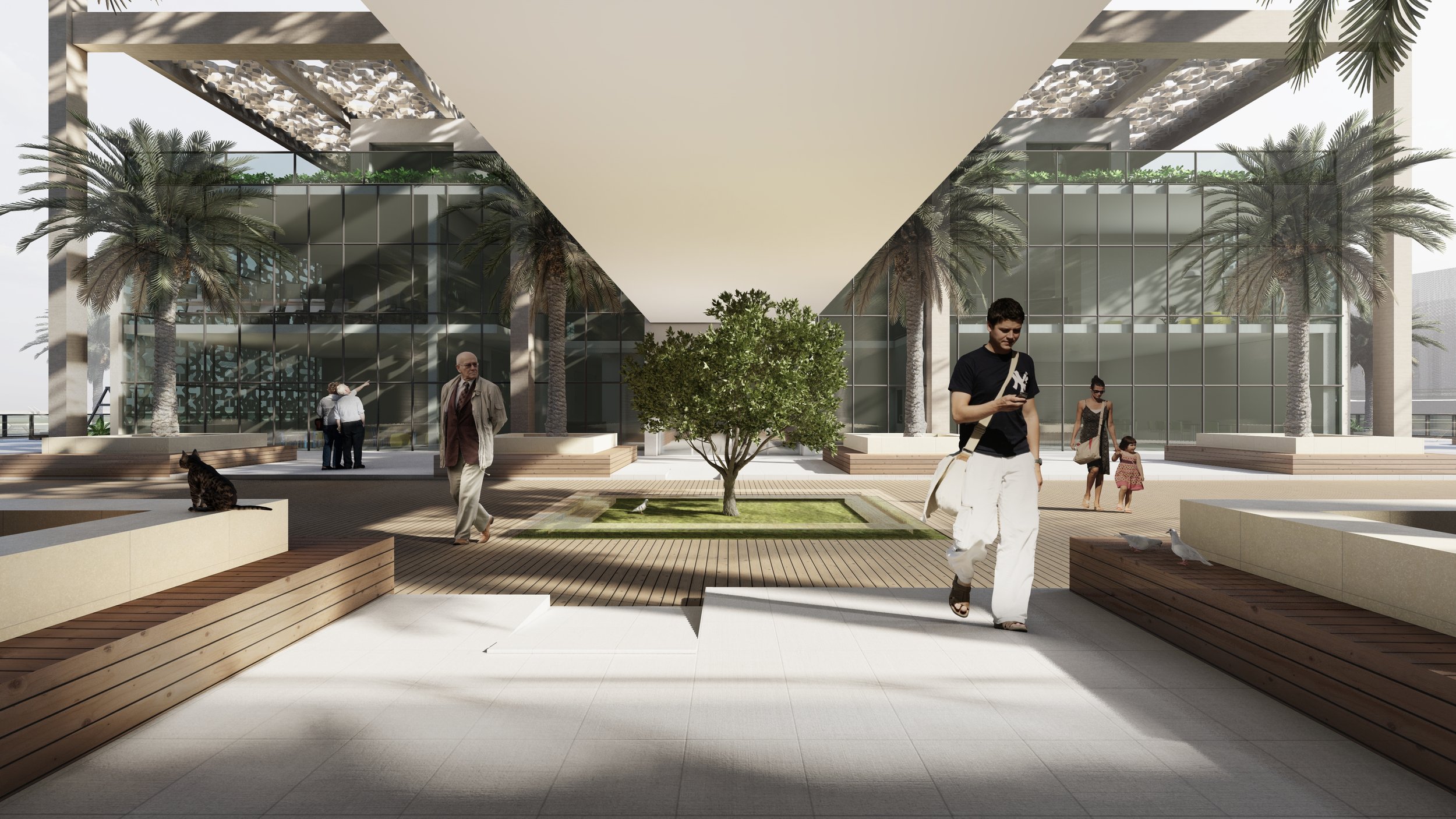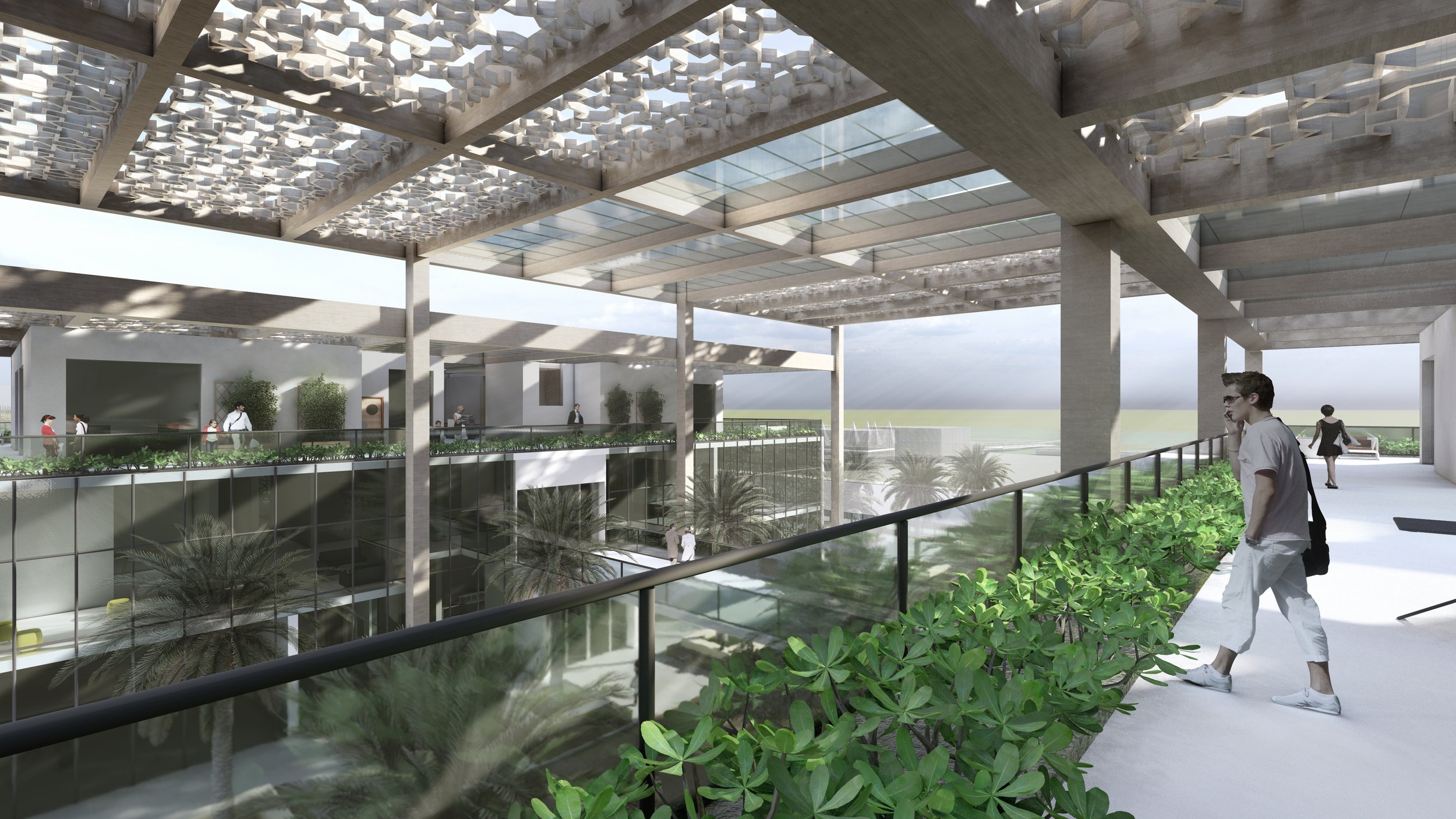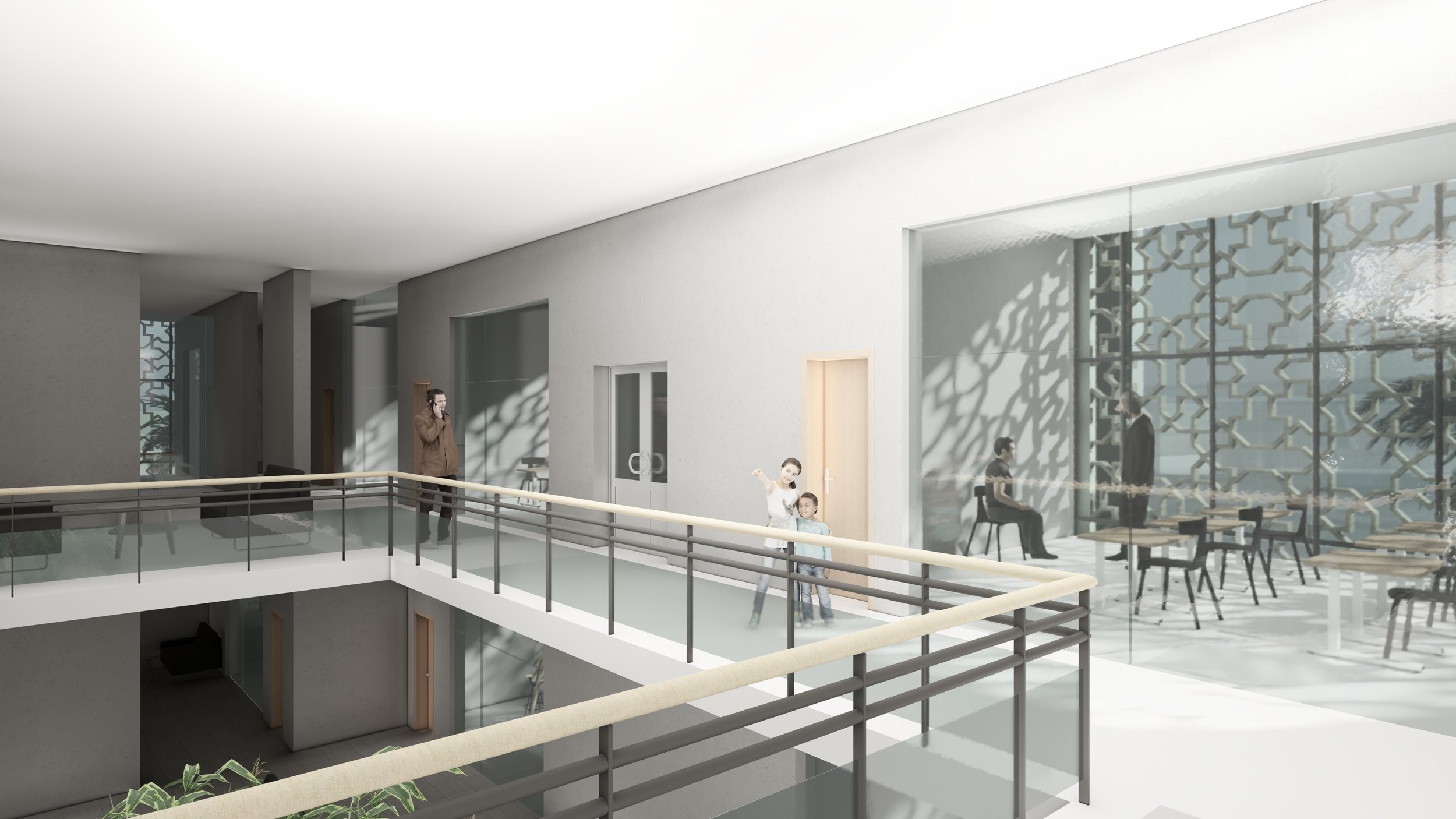
With the advent of social networks in human routines, a real generational gap is imposed between adults, the elderly, and children. There is a noticeable disconnect of the elderly in today's society's new typology, leading to negative repercussions on their mental and physical health.
Harmonious Spaces
Societies evolve, leading to changes in how different generations interact. In the past, places like marketplaces and parks brought together young and old, facilitating mutual learning and maintaining community unity. Today, these meeting spaces are rare, affected by urban transformations and lifestyle changes. In response to this, projects like Espace Harmonia are emerging, aiming to recreate convivial and shared spaces between generations. This initiative strives to become a pillar of social cohesion, offering activities and spaces that encourage dialogue and understanding among ages. Espace Harmonia also integrates sustainable development in its architecture and operations, seeking to harmonize social needs with respect for the environment. This center aims to enrich the local social fabric while minimizing its ecological impact, offering a model of how community spaces can contribute to a more integrated and respectful society, where sharing, learning, and mutual respect unite generations.
In Tunisia, the elderly are not interested in these new technologies, while children use devices from an early age. This has created new generations disconnected from their traditions, culture, and history, who are no longer interested in the outside world.
Collective memory is gradually being erased due to this generational break. Craft professions are disappearing, and stories, myths, and traditions linked to each region are slowly fading. Architecture has allowed different age groups to come together through various projects. For example, a practice in China involves demolishing a temple each year and rebuilding it to preserve traditional construction methods and pass them on to the new generation.
So, how can we bring generations together through architecture? Among these projects, we cite the intergenerational centers we have chosen to strengthen the bonds of the inhabitants of the city of Bizerte in the old port.
Questions arise: What activities or spaces could encourage people of all ages to meet and exchange? How can all age groups be included through architecture? What are the tools that help put users at ease and make them more tolerant towards others?
Our Work for Harmonious Spaces
We wanted ‘Harmonious Spaces’ to represent a communal environment where different generations could thrive in unity, and coexist in a space that could prosper new relationships across different ages, mindsets, and lifestyles.
Location: Bizerte
To successfully conduct this study, it is essential to collect information and data related to social and urban aspects. After analyzing the Bizerte area and conducting a survey with people of all ages, we will understand and define the role of each individual in our society, as well as their needs, to design an appropriate intergenerational space.
We analyzed the development of humans in-depth, from birth to retirement, and the importance of intergenerational interactions and relationships for social cohesion. By exploring the varied exchanges between the young and the less young, we saw how these dynamics manifested in different contexts, such as family, professional environment, or community initiatives.
In exploring Bizerte, a historic city in Tunisia, we examined its development through history and the evolution of its urban landscape, the structure of the city, including the layout of streets, access areas, and boundaries. We analyzed important places such as public squares and the effects of modernization.
Finally, we addressed possible solutions to these problems, particularly installations that benefit all generations, to understand the challenges and opportunities of Bizerte as a modern city while preserving its rich heritage.
The focus will be on the crucial role of transferring knowledge, traditions, and values, essential for mutual understanding and reinforced solidarity between generations. These interactions create deep and lasting bonds, fostering a more united and harmonious society.
Final Renderings For Harmonious Spaces














